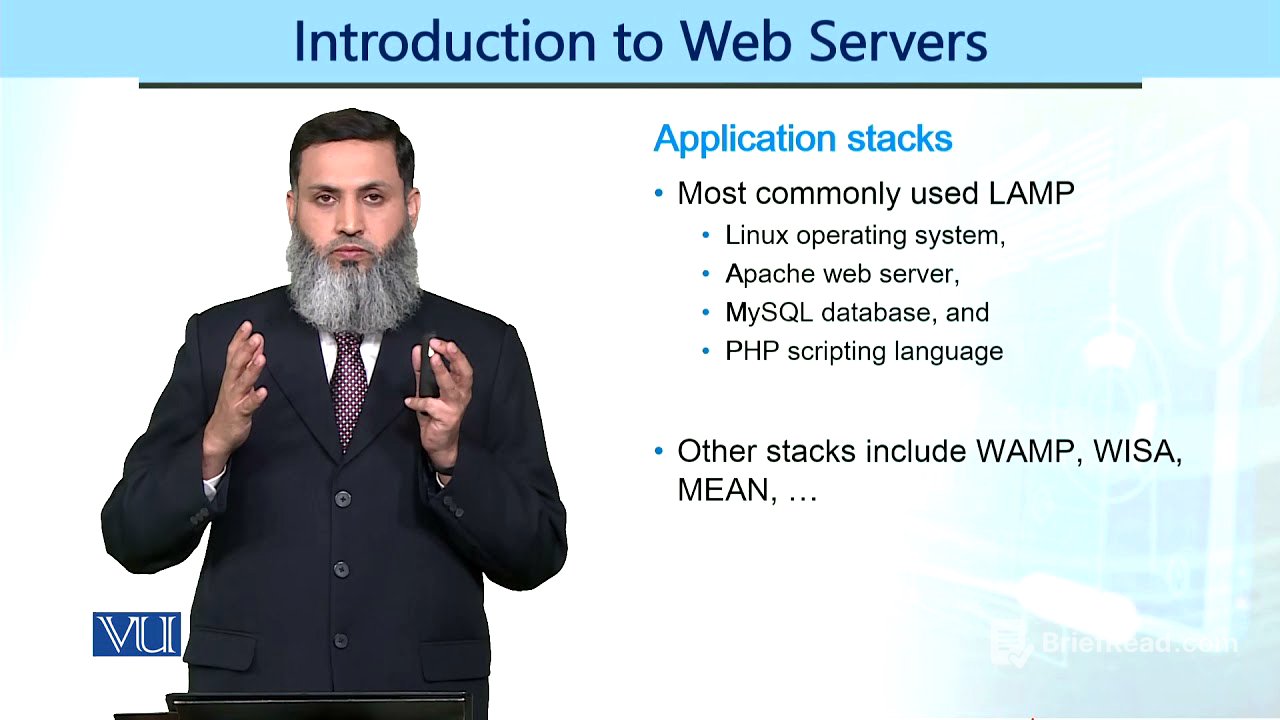TLDR;
This video provides an overview of web server technology stacks, which are combinations of software used to create dynamic websites. It covers popular stacks like LAMP (Linux, Apache, MySQL, PHP), WAMP (Windows, Apache, MySQL, PHP), and MEAN (MongoDB, Express.js, Angular/React, Node.js). The video also discusses the roles of operating systems, web servers, databases, and scripting languages in web development, as well as the skills required to be a full-stack developer.
- Explains the concept of web server technology stacks and their components.
- Discusses popular stacks like LAMP, WAMP, and MEAN.
- Outlines the roles of different software components in web development.
- Touches on the skills required for full-stack development.
Introduction to Web Server Stacks [0:00]
The video introduces the concept of web servers as powerful computers running applications. These applications rely on a stack of technologies, including the operating system, web server software, database, and scripting language, to generate dynamic content. The presenter mentions that understanding these stacks is crucial for web development.
Popular Web Server Stacks: LAMP, WAMP, and MEAN [0:46]
The video highlights several commonly used web server stacks. The LAMP stack consists of Linux as the operating system, Apache as the web server, MySQL as the database, and PHP as the scripting language. WAMP is similar to LAMP but uses Windows as the operating system. The MEAN stack, a more modern approach, comprises MongoDB as the database, Express.js as the backend framework, Angular or React as the frontend framework, and Node.js as the runtime environment.
Components of a Web Server Stack [3:51]
The discussion covers the individual components of a web server stack. The operating system provides the foundation, while the web server software (like Apache or Microsoft IIS) handles HTTP requests. Relational database management systems (RDBMS) such as MySQL, SQL Server, or non-relational databases like MongoDB are used for data storage. Scripting languages like PHP, ASP.NET, or Python are used to generate dynamic content. JavaScript is essential for creating dynamic content on the website's front end.
Full-Stack Development [3:39]
The video touches on the role of a full-stack developer, who should be proficient in all layers of the technology stack. This includes understanding operating systems, configuring servers, developing front-end and back-end applications, and working with databases. The presenter emphasizes that full-stack developers need to have a broad understanding of various technologies to effectively build and maintain web applications.









